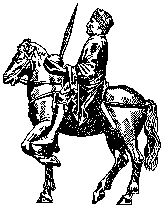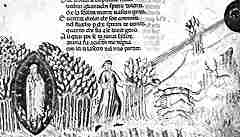

Charlemagne




If you are looking at this page without frames, there is more information about medieval writing to be found by going to the home page (framed) or the site map (no frames).
| The Classical Legacy | |||||||
 |
The works of Classical authors of ancient Greece or Rome were transcribed throughout the middle ages. They were represented in monastic libraries and rediscovered with glee by the humanist writers and scribes of 15th century Italy. Because of the long chains of transcription which occurred over many centuries, works are known from medieval copies, or even later antiquarian copies from lost medieval exemplars, which are not known from originals of the Classical era. The works have been edited, repunctuated, extracted and reassembled at various points along the way. Some of the chains of medieval transcription can be traced through entries in medieval library catalogues, even after the copies themselves have disappeared, at least from public knowledge. | ||||||
| As the fragmented ruins of the forum in Rome have been conserved and valued for their heritage, so the literary works of the era have been salvaged, sometimes also in disarrayed form. | |||||||
| A series of articles on this subject can be found in Chavannes-Mazel and Smith (ed) 1996. | |||||||
| Scholars of this speciality define the Latin Classics as works produced by pagan authors and written in Latin as their original language. This may seem in some ways like a nitpicky definition, excluding early Christian authors like St Augustine or St Benedict, even though they came from the geographical heart of the former Empire. It also excludes prolific and influential early Christian authors like Isidore of Seville, who have become defined as patristic authors even though they compiled much Classical scholarship and wrote original works in Latin. The definition does have a certain point, however, in that it addresses the question of why Christian communities which had established themselves in what had become pagan areas continued to treasure the works of authors with pagan values. | |||||||
| The Emperor Charlemagne is credited with a revival of Classical scholarship and literary works, the production of volumes for the royal library being responsible for the preservation of copies of many Classical works. The works were also transcribed in the scriptoria of the developing monastic institutions of Europe. Monasteries like Bobbio in Italy, St Gall in Switzerland and Fleury in France added Classical texts to their expanding libraries in the later part of the first millenium AD, when they were becoming established as centres of Christianity, literacy and scholarship. Fleury was a great pilgrimage centre as it was thought to conserve the mortal remains of St Benedict. The wealth from this medieval commercial enterprise allowed the setting up of a major centre for the copying of texts. |
 |
||||||
|
Charlemagne |
|||||||
| While the evidence for the content of early monastic libraries is fragmented and difficult, it seems that at first the newly founded institutions bought in the essential works they needed for their mission; liturgical works, biblical studies and patristic works. By the 9th century there was an enthusiastic process of book copying going on within the monasteries, and these included works for the teaching of Latin literacy. The range of these works increased though the 11th and 12th centuries. | |||||||
| The choice of works is interesting. Top of the Dark Ages monastic hit parade were the works of Virgil, a poet greatly revered in late antiquity when high class editions were produced using square capitals and rustic capitals, scripts that were very laborious to produce for complete pages of text and reserved for the works of highest valuation. | |||||||
 |
Square capitals used in a manuscript of Virgil's Aeneid from the Library of St Gall (Cod.1394,p.12). The manuscript leaves were found doing duty as book covers. (From Steffens 1929) | ||||||
| A page from the Palatine Virgil, a 5th or 6th century Italian copy of Virgil's Georgics and Bucolics, written in rustic capitals, appears on the Vatican Exhibit website (Vatican Library, Pal. lat. 1631, f.15v). | |||||||
 |
Perhaps it was its value as Latin literature rather than its content that made Virgil so significant. In the 14th century, Dante recreated Virgil as his guide through hell and stated his position in a medieval Christian setting as the most virtuous of pagans who had the misfortune to be born just a whisker too early to be a Christian. | ||||||
| Dante meets Virgil in a 14th century Italian manuscript of the Divine Comedy (British Library, add ms 19587). By permission of the British Library. | |||||||
| The range of Classical literary works known to have been transcribed in monastic scriptoria increased from the 9th to the 11th centuries, including the poems of Horace, the Comedies of Terence, the works of Lucan, Statius and Sallust, the Satires of Juvenal and Perseus and towards the end of this period, the poems of Ovid, especially the Metamorphoses. From the 12th century, there was a preference shown for collecting the works of an author into a single volume. Certain individual works were produced in single volumes, such as Virgil's Aeneid or the poems of Horace. It was usual to at least attempt to transcribe works in their entirety. |  |
||||||
| Illustration from a 12th century copy of the Classical Comedies of Terence (Bodleian Library, Auct. F.2.13, f.105). (From New Palaeographical Society 1905) | |||||||
| You can examine the entire manuscript of Terence illustrated above on the Bodleian Library's Early Manuscripts at Oxford University site. You can flip through the thumbnail images, but don't try to download the large images through a modem connection or without plenty of RAM. They are just too huge. | |||||||
| Columbia University displays a folio from a 13th century French copy of Catalina and Iugurtha of Sallust (Lodge MS 8, f.35v,36). | |||||||
 |
Also well represented, but evidently of somewhat lesser popularity than the literary works were the histories of authors like Caesar and Suetonius. The First Decade of Livy survives in over 150 manuscripts which range in date from the 4th century to the 15th. The First Decade represents the first ten books of a 142 book production on the History of Rome, of which only 35 are now known to us. There may be an explanation as to why the first ten books are the best represented. Perhaps the scribes went on strike. | ||||||
| A decorative intial from a late 12th century copy of Suetonius' De Vita Caesarum in 12 books, which formerly belonged to the Benedictine Abbey of St Bénigne at Dijon, France (British Library, Egerton 3055, f.2). By permission of the British Library. | |||||||
| Three little grabs from an 11th century edition of the first ten books of Livy (Bodleian Library, Auct.T.I.24, ff.7, 67, 83b), all written in a Caroline minuscule script but indicating the work of several different scribes. (From New Palaeographical Scoiety 1909) | |||||||
| A leaf from a 15th century Italian version of Livy's History of Rome is displayed by the Medieval Manuscript Leaves website. | |||||||
| Also represented in the monastic libraries were various textbooks and assorted works such as the philosophical treatises of Apulieus and the speeches of Cicero. | |||||||
|
|
|||||||
|
If you are looking at this page without frames, there is more information about medieval writing to be found by going to the home page (framed) or the site map (no frames). |
|||||||